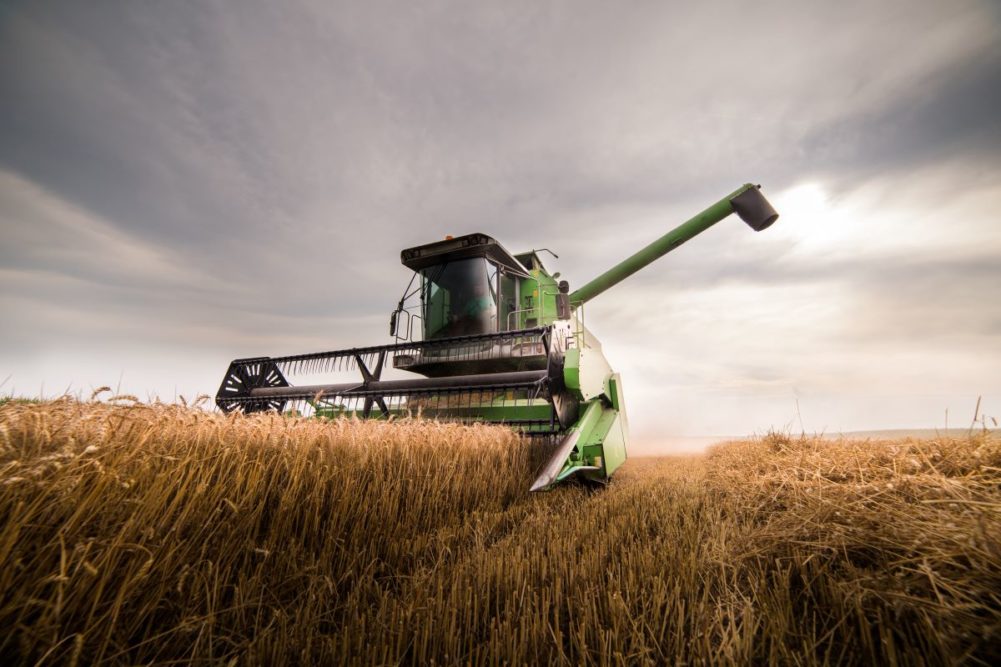KANSAS CITY — A humanitarian grain corridor out of Ukraine, more competitive prices for US exports and enduring fears of global recession are among the factors to watch in the wake of the US Department of Agriculture’s first survey-based forecasts for durum and other-spring wheat.
The USDA in its July 12 Crop Production report forecast 2022 US durum production up 107% from 2021, spring wheat other than durum up 52% and winter wheat down 6%, the latter up 2% from the June forecast.
“That’s really meaningful for the US, and it certainly is a benefit to the supply situation,” said Bill Lapp, president and owner, Advanced Economic Solutions.
Production of spring wheat other than durum was forecast at 502,920,000 bus, up 52% from 331,140,000 bus in 2021, based on an average yield of 47 bus an acre, up 14.4 bus from last year, and harvested area of 10.7 million acres, up 5% from 2021. Of the total, 456,847,000 bus was hard red spring wheat, up 54% from 2021. If realized, it still would be the third smallest hard red spring wheat crop of the most recent 10-year period.
Durum production was forecast at 77,208,000 bus, up 107% from 37,259,000 bus in 2021, based on a forecast average yield of 40.3 bus an acre, up 16 bus from last year, and expected harvested area of 1.92 million acres, up 25% from 2021. If realized, durum production would be the largest since 78 million bus in 2018.
Winter wheat production was estimated at 1,200,691,000 bus, up 2% from the June forecast but down 6% from 1,277,365,000 bus in 2021, based on an average yield of 48 bus an acre, down 0.2 bu from June and down 2.2 bus from last year, and harvested area of 25 million acres, up 2% from June but down 2% from 2021. Of the total, 585 million bus was hard red winter, up 0.6% from June; soft red winter, up 5%; and white winter down 1%, including 225 million bus of soft white and 15.1 million bus of hard white.
“We’re finding more hard wheat bushels and conditions have improved in the northern states, especially South Dakota and Montana in recent weeks,” Mr. Lapp said. “We know a lot about the hard wheat crop, but what we really know about is the southern tier of states, and it seems to have gotten better.”
As to the soft red winter wheat increase, “it affirms the logic of Chicago being at a discount of some 50¢ to Kansas City and it’s promoted exports,” he said. “The benefit of lower prices is it brings more demand.”
All wheat production in 2022 was forecast at 1,780,819,000 bus, up 135,055,000 bus, or 8%, from 1,645,764,000 bus in 2021.
Wheat futures turned lower after the report. September wheat futures on all three US exchanges were down 35% to 38% from May 17 highs, with most of the declines prior to the Crop Production report.
In the wake of the latest projections from the USDA, bakers have plenty to monitor as they look to boost coverage levels estimated in mid-July at 30% to 35% for the fourth quarter and 5% to 10% for first quarter 2023.
“Is the USDA estimate of the European Union wheat crop at 134 million tonnes too high?” asked Steve Freed, vice president of research at ADM Investor Services. “The first unanswered question is whether or not the UN, Russia and Ukraine agree to a deal that would open a corridor for Ukraine exports.”
On the domestic front, following higher-than-expected US Consumer Price Index inflation data in June, some market players hope this may be the top for inflation, given recent declines in energy and grain futures. The latter, partly a response to fears of global economic recession, has helped make US exports more competitive.
In the past 10 days that shook the world, we’ve had four things that factor in the market,” Mr. Lapp said. “USDA told us there are more spring wheat stocks than we previously thought, and projected a record yield for North Dakota. We’ve had complete risk-off in these markets where crude oil went down at least $10 per barrel. And the eternal prospect for a passageway for Ukraine grain to leave the Black Sea.”
On flour buying strategy for the baker, Mr. Lapp said, “We’ve come down to a level where US prices are competitive in the world and bakers should be trying to reduce their exposure each week for the remainder of the crop year.”



